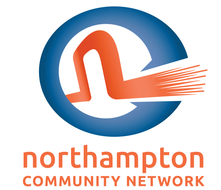While our coalition wants the city to create a municipal network, we also see our role as part educational. That’s because some of us work in the IT industry.
In this post we look at the pros and cons of fiber to the home (FTTH). Fiber means an optical glass cable. Signals are transmitted using light instead of electromagnetic radiation.
We propose that a Northampton municipal network provide an optical fiber connection to every residence and business in the city that chooses to join the network.
Pros:
- This is the default standard for municipal networks in the 21st century.
- Fiber can easily provide 1 gigabit per second download and upload speeds. It’s not hard to offer even faster connections of 10 or 100 gigabits per second if needed, providing the network has the right hardware.
- No other medium — including 5G wireless — can come close to delivering this combination of speed, bandwidth and fast connect time.
- Fiber is extremely reliable.
- Fiber is not subject to electromagnetic interference.
- Fiber is more secure. It is harder to illicitly tap into a fiber optic network.
- Because there is so much more bandwidth on a fiber optic network, it is easier to allow faster upload speeds.
- The amount of data that can be transmitted on a single strand of optical fiber is huge. While not unlimited, it is for all practical purposes unlimited.
- The network should be less congested because of the ample bandwidth. It’s like the difference between having a two-lane road and an eight-lane interstate.
Cons:
- This is a wired, not a wireless, technology. A network could potentially include wireless hotspots in public areas too, such as downtown. But your residence or business would connect using a wired connection. Most wireless use would be within your residence or business over your own Wifi network.
- It is potentially more expensive to bring fiber to the home rather than using existing coaxial cable network. Interfaces to the network at the home or business are potentially more expensive. Typically, an optical signal will be converted at the home or business to an electromagnetic signal on a local coaxial or ethernet medium.
- Optical fiber is relatively inflexible. Some signal loss occurs when it is bent. The sharper the bend, the greater the potential signal loss.
